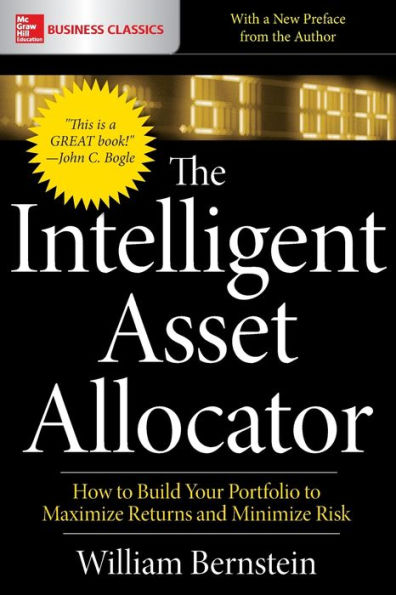The Intelligent Asset Allocator has helped thousands of people like you build wealth through carefully diversified portfolios. Now, with global markets in constant flux, balancing risk and reward is more critical than ever.
Self-taught investor William Bernstein offers no gimmicks, inside secrets, or magic solutions—just the facts about investing and calm, smart advice on how to build and manage a portfolio designed for the long run. This is all you need, despite claims of the advisors and pundits looking to profit from your hard-earned money. This easy-to-understand guide provides everything you need, including:
* The basics of finance—historical, psychological, and institutional
* Time-tested strategies for improving the risk/reward ratio
* Ways to sharpen your focus to improve portfolio management
Bernstein walks you through the fundamentals of important topics like multiple-asset portfolios, optimal asset allocations, market efficiency, and strategy implementation.
No one knows the future of markets. Your forecast is as good as that of the last financial pundit you saw on TV. Trust your instincts, trust your research, and trust the proven-effect approach of The Intelligent Asset Allocator, and your portfolio will deliver returns through the blue skies and storms of financial markets.
The Intelligent Asset Allocator has helped thousands of people like you build wealth through carefully diversified portfolios. Now, with global markets in constant flux, balancing risk and reward is more critical than ever.
Self-taught investor William Bernstein offers no gimmicks, inside secrets, or magic solutions—just the facts about investing and calm, smart advice on how to build and manage a portfolio designed for the long run. This is all you need, despite claims of the advisors and pundits looking to profit from your hard-earned money. This easy-to-understand guide provides everything you need, including:
* The basics of finance—historical, psychological, and institutional
* Time-tested strategies for improving the risk/reward ratio
* Ways to sharpen your focus to improve portfolio management
Bernstein walks you through the fundamentals of important topics like multiple-asset portfolios, optimal asset allocations, market efficiency, and strategy implementation.
No one knows the future of markets. Your forecast is as good as that of the last financial pundit you saw on TV. Trust your instincts, trust your research, and trust the proven-effect approach of The Intelligent Asset Allocator, and your portfolio will deliver returns through the blue skies and storms of financial markets.

The Intelligent Asset Allocator: How to Build Your Portfolio to Maximize Returns and Minimize Risk
224
The Intelligent Asset Allocator: How to Build Your Portfolio to Maximize Returns and Minimize Risk
224Paperback(Reprint)

Product Details
| ISBN-13: | 9781260026641 |
|---|---|
| Publisher: | McGraw Hill LLC |
| Publication date: | 08/19/2017 |
| Edition description: | Reprint |
| Pages: | 224 |
| Sales rank: | 372,866 |
| Product dimensions: | 5.90(w) x 8.90(h) x 0.50(d) |
